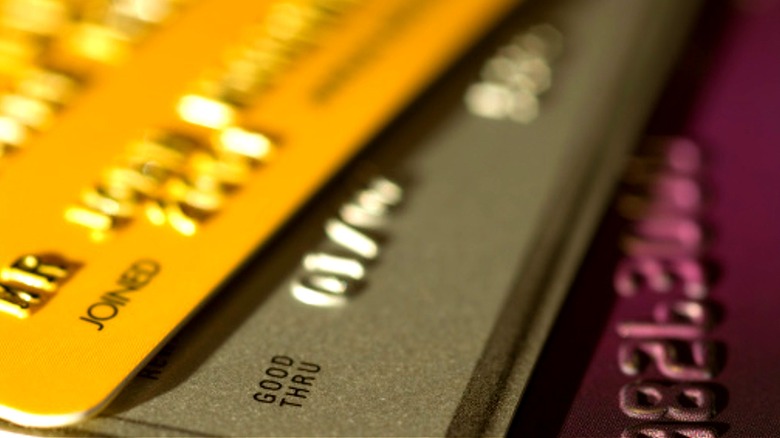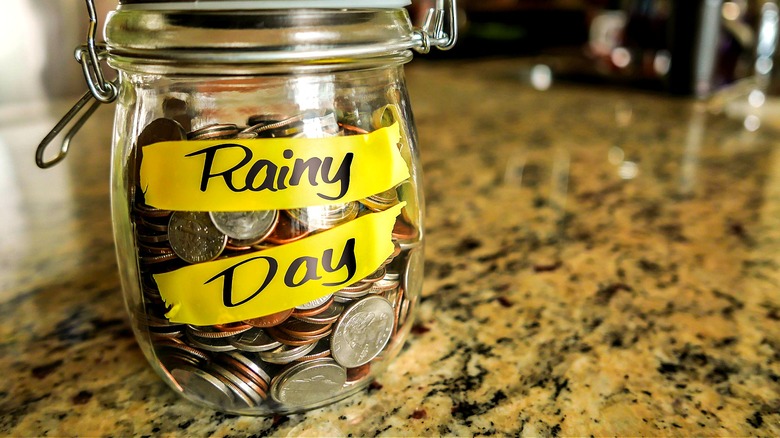Is Credit Card Protection Insurance Really Worth The Cost?
In the fourth quarter of 2023, credit card debt in the United States reached $1.13 trillion. Further, a 2024 Lending Tree study found that Americans have monthly debt obligations of $1,600 on average, of which $272 is paid toward credit card debt. This said, if you were to unexpectedly experience a financial hardship that made it difficult to pay all your debts each month, like, say, you were laid off or required to take a furlough, then receiving credit card forbearance could prove extremely helpful to you and your household's finances. One way you can get such financial relief is to pay for credit card protection insurance, which will pause your payments for a time.
While only making the minimum payment on your credit cards can lead to financial trouble due to interest charges, not paying down your balance at all can lead to greater problems, and quickly. Your missed credit card payment will trigger a late fee, could lead to a penalty APR (and higher interest), and will likely be reported to the credit bureaus, thus affecting your credit score. For these reasons alone, having credit card protection insurance would seem prudent, however, there is a cost. And is this cost ultimately worth it, when you might never use it? What's more, the cost of the program is different for every cardholder.
How credit card protection insurance works
As with any optional insurance product, the hope is that you will never need to use it. However, in the event that you do, you have some relief. Of course, it's important to understand the extent of your coverage and what exactly you're paying for. (See Money Digest's roundup of insurance products that are a total waste of money.) For credit card protection insurance, you'd only need it if you suddenly faced financial hardship (through disability, a critical illness, or job loss), and as a result, could no longer make payments on time. While programs vary, you could potentially get up to two years of forbearance for payments and interest.
Not all credit card companies offer the same type of insurance, so you should first reach out to the company and gain clarification on what type of add-on is available and how much you'd need to pay. As said, the fee is different for every cardholder, as it's typically based on the balance for the month. Given how this fluctuates, it's certainly an added cost you'll need to factor into your monthly budget. This could, however, provide you with further insight into how you use your credit cards and might be what ends up motivating you to make changes. This said, if your credit card use goes down to the point where it's manageable, and you're able to pay off your balance every month, then you'll also eliminate the need for such future protection.
How to decide if this protection is worth it
In its 2024 annual emergency savings report, consumer financial services company Bankrate found that while 36% of U.S. adults had more credit card debt than money in emergency savings, 55% said they had more in their emergency savings than credit card debt. So, for the majority of consumers, a credit card protection insurance product might seem superfluous; many probably don't even realize it's an option.
As for how fees might work, here's an example. Say your bank or credit card company charges you 95 cents for every $100 of the monthly balance on your new billing statement. So, if your balance is $400, your fee would be $3.80. If your balance is paid in full for the month and your balance is zero, then your fee is zero, too. That is, even if you're opted in, you won't be charged anything and so the cost of the insurance is essentially nothing.
On the flip side, if you carry a large credit card balance, you'll pay a commensurate fee each month (in addition to your other finance charges); yet, it's for these consumers that such insurance would be most valuable, allowing them to stop payments (for a time) if their circumstances change. One thing to remember, though, is that every credit card/bank will have its own program, which means paying for each one you decide to opt in to, which can add up fast.


